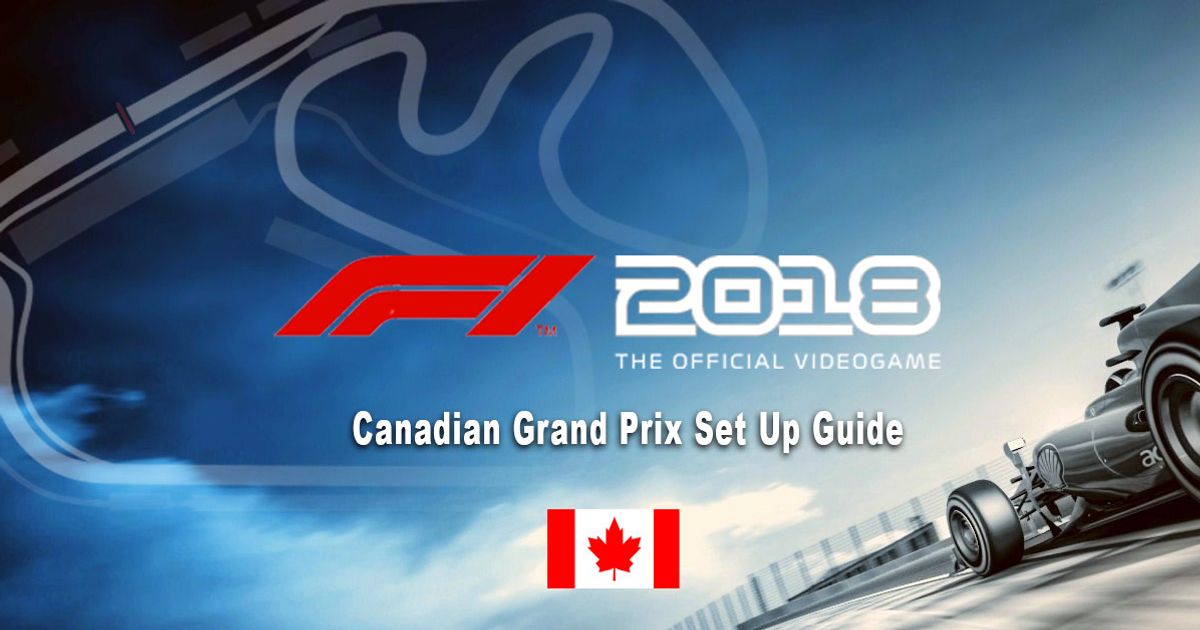The Canadian Grand Prix has long been one of the best on the calendar. With several overtaking points and the famous Wall of Champions waiting to claim another victim the margin for error is smaller than almost anywhere else, and yet the speeds are among the highest in F1. The long straights and multiple chicanes create one of the toughest circuits for brakes and can lead to some amazing wheel-to-wheel action.
The most important sections of the track are in the final sector where the turn 10 hairpin, L'Epingle, is a great overtaking spot. However, a poor exit can leave you wildly vulnerable down the Casino Straight toward the final chicane, especially when DRS is available. It leads to the big braking zone of the lap and the Wall of Champions, then another DRS zone on the pit straight. You have to get that sector just right if you want to claim pole position, and it is also where most of your overtaking/defending will be done.
Aerodynamics
With five quick changes of direction and several slow corner-entries we haven't lowered the front wing angle too much. getting the nose into corners, especially the tight turn six and turn eight, is vital. We have taken more rear wing off, however, as there are several long acceleration zones where you need to minimise drag as much as possible. With turn five being the only fast turn we can get away with less rear downforce.
Transmission
Transmission is all about how the power gets down onto the track surface. By locking up the 'on throttle' differential more we create better traction out of corners and ask more of the tyres, which is just fine around Circuit Gilles Villeneuve as it is very kind to tyres. We have unlocked the 'off throttle' differential ever so slightly just to help improve turn-in by generating a little oversteer.
This is one of the more driver-specific parts of the setup however, so if you are not finding this setup works start by adjusting the differentials.
Suspension Geometry
We haven't touched the camber here. Canada needs acute turn-in that adding camber can help with, but it also requires terrific straight line speed which will be negatively affected by adding more camber. If you play with the camber you'll need to take more wing off the car, and it can start to get too light when accelerating out of turn two and through turn five, and since the barriers are close, it's not worth the risk.
We have taken away some toe-out on the front wheels to aid in our quest for straight line speed, while removing some toe-in on the rear to help with rear end responsiveness, which will help us get around the hairpin and straighten out for acceleration again.
Suspension
The suspension gets a little wild in this setup because of the unique nature of the circuit. With a stiffer front suspension we prevent forward weight transfer under braking and make the car more responsive on entry to corners, ideal for the hairpin and the tight turn six, but by softening the rear suspension we allow weight roll-back under acceleration, improving traction significantly for the long acceleration zones and also allowing us to roll the rear end over the kerbs a little more.
Likewise, we have a stiffer front anti-roll bar that increase responsiveness but a softer rear ant-roll bar to reduce tyre wear, which means better traction for longer.
The ride height is nice and low at 4-4. Not as low as it could be, but with the soft rear suspension the back end will really hunker down along the straights. The Canadian GP has a few bumps, and we also want to ride the kerbs aggressively through the final chicane so we can't give ourselves Monza levels of ride height.
Brakes
Canada can be very hard on brakes, so we can't pump up the pressure too much otherwise they may just let go late in the race. By having the pressure around 80% you get more consistent stopping power.
We have moved the brake bias back slightly to add oversteer to the car and really get the front end into the corners. This can be adjusted throughout the race, and will need to be done as the tyres get older.
Tyres
Leave the front tyre pressures alone so they remain responsive at turn-in, but we have let some air out of the rears to create a bigger contact patch and generate more traction out of the corners.
Weight Distribution
Finally, move the weight ballast back slightly, again in the effort of increased traction and a little more responsive a front end.
That's it, that's Canada and the Circuit Gilles Villeneuve. It rewards precision and punishes over-aggression, but if you get it just right, this is one of the most exciting tracks to race on. If you are not feeling comfortable with this setup then start by making adjustments to the differential and then begin to bring the front and rear suspensions back together. See you on the time sheets!
Canadian Grand Prix Wet Lap Setup
Front Wing: 4
Rear Wing: 8
On Throttle: 65%
Off Throttle: 100%
Front Camber: -2.50
Rear Camber: -1.00
Front Toe: 0.05
Rear Toe: 0.20
Front Suspension: 5
Rear Suspension: 3
Front Anti-Roll Bar: 9
Rear Anti-Roll Bar: 7
Front Ride Height: 3
Rear Ride Height: 4
Brake Pressure: 88%
Front Brake Bias: 53%
Front Tyre Pressure: 23.4 psi
Rear Tyre Pressure: 21.1 psi
Ballast: 6
Explore new topics and discover content that's right for you!





